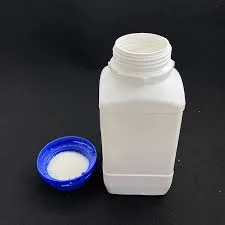Chemicals Used in Effluent Treatment Plants (ETPs)
Effluent Treatment Plants (ETPs) play a crucial role in managing wastewater generated by various industrial activities. The primary goal of these plants is to treat polluted water before it is released into the environment or reused. Various chemicals are employed at different stages of the treatment process to effectively remove contaminants and pollutants. This article explores the main chemicals used in ETPs, their purposes, and the impact they have on the treatment process.
Coagulants and Flocculants
One of the first steps in the wastewater treatment process is the removal of suspended solids. Coagulants and flocculants are essential chemicals used to aggregate these particles into larger clumps, or flocs, which can then be settled out of the water. Common coagulants include aluminum sulfate (alum), ferric chloride, and polyaluminum chloride. These substances work by neutralizing the charges on suspended particles, allowing them to come together.
Flocculants, on the other hand, are used after coagulants to enhance the agglomeration process. Polymers, such as polyacrylamide, are commonly used as flocculants. They provide a network for the flocs to form, increasing the efficiency of the sedimentation process. The use of these chemicals helps to clarify the effluent and prepares it for subsequent treatment steps.
pH Adjusters
Maintaining the appropriate pH level is essential for effective wastewater treatment. Various processes, including biological treatments, function optimally within a specific pH range. Chemicals such as sulfuric acid and sodium hydroxide are commonly used as pH adjusters in ETPs. Sulfuric acid can lower the pH of alkaline waters, while sodium hydroxide can neutralize acidic effluents. By adjusting the pH, these chemicals enhance the effectiveness of coagulants and flocculants and optimize biochemical processes.
Disinfectants
After treating the wastewater to remove physical and chemical pollutants, the next step often involves disinfection. This is crucial to eliminate pathogenic organisms that could pose risks to public health and the environment. Chlorine is one of the most widely used disinfectants due to its effectiveness and affordability. However, it can form harmful by-products, such as trihalomethanes (THMs), which have raised environmental concerns.
what are the chemicals used in etp

Alternatives to chlorine disinfection include ozone and ultraviolet (UV) light. Ozone is a powerful oxidizing agent that effectively kills bacteria and viruses while leaving no harmful residues. UV light is another method that utilizes high-energy radiation to inactivate microorganisms. Both methods are increasingly favored because they do not produce harmful by-products, making them more environmentally friendly options.
Nutrients
In biological treatment processes, particularly in activated sludge systems, specific nutrients are required to promote the growth of microorganisms that degrade organic pollutants. Nitrogen and phosphorus are key nutrients that aid in the metabolic processes of bacteria. Nitrate, ammonium salts, and phosphate compounds are commonly added to ensure that microorganisms have the necessary nutrients for efficient treatment.
The balance of these nutrients is critical; too much can lead to eutrophication in receiving waterways, while too little can hinder microbial activity, reducing treatment efficiency.
Sludge Conditioning Agents
After treatment, the residual sludge generated must be managed effectively. Chemicals such as lime or ferric chloride are often added as sludge conditioning agents. Lime helps to stabilize the sludge and reduce its volume, making it easier to handle and dispose of. Ferric chloride can also be used to enhance dewatering processes and reduce odors associated with sludge.
Conclusion
The efficient operation of Effluent Treatment Plants relies heavily on the strategic use of various chemicals at different stages of wastewater treatment. Coagulants and flocculants enhance solids removal; pH adjusters ensure optimal conditions for biochemical reactions; disinfectants eliminate pathogens; and nutrients support microbial activity. Finally, sludge conditioning agents contribute to more manageable waste byproducts. Understanding the role of these chemicals not only highlights their importance in wastewater treatment but also emphasizes the ongoing need for environmentally responsible practices in effluent management. Through careful selection and application of these chemicals, ETPs can help safeguard public health and protect the environment.

